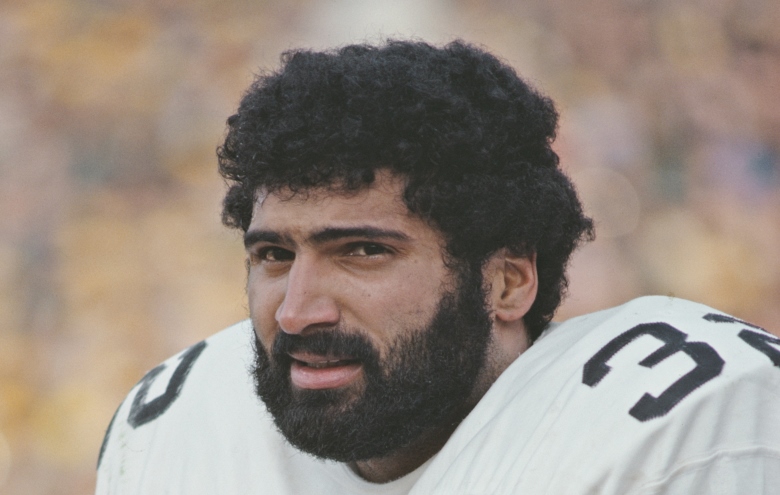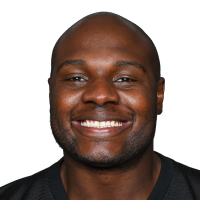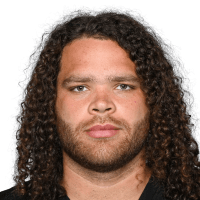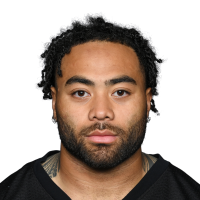
It’s a question that periodically inspires discussion on sports talk radio. How would Nick Saban’s Alabama Crimson Tide fare against an NFL team? What about a team of college All-Stars going against the defending Super Bowl champions?
It’s perhaps difficult to imagine today, but until 1976 there actually was an annual exhibition game between the reigning NFL champs and teams made up of the very best college seniors, many of whom had already been drafted into the NFL.
The latest Steelers news straight to your inbox! Join the Heavy on Steelers newsletter here!
Known as the Chicago Charities College All-Star Game, the contest was played every year but one between 1934 and 1976, with 1974 being the lone exception, cancelled due to that year’s NFL players strike. The game always took place at Soldier Field, except for 1943 and 1944, when it was held at Northwestern’s Dyche Stadium.
The 43rd (and Final) Edition of the College All-Star Series
Notably, the Pittsburgh Steelers were the NFL representative for the last two games of the series, having emerged victorious in Super Bowl’s IX and X. The 1976 contest took place on July 23, eight days before the team embarked on a six-game preseason slate that preceded a 14-game regular-season schedule.
That didn’t stop Steelers head coach Chuck Noll from sending his starters out to take on a college team that featured future Hall of Fame defensive end Lee Roy Selmon (selected No. 1 overall in the 1976 draft by the Tampa Bay Buccaneers), as well as other top picks like running backs Chuck Muncie (New Orleans Saints) and Mike Pruitt (Cleveland Browns), not to mention Heisman Trophy winner Archie Griffin (Cincinnati Bengals).
More notably still, the college team — coached by Notre Dame’s Ara Parseghian — included three of Pittsburgh’s own rookies, namely first-round pick Bennie Cunningham (tight end, Clemson), second-round pick Ray Pinney (offensive line, Washington) and third-round pick Mike Kruczek (Boston College), the latter of whom served as starting quarterback for the All-Stars.
When Noll learned that Kruczek would be starting the game, he reportedly said, “We only worry about the guys who have [Pittsburgh] jerseys on. We’ll worry about Kruczek when he has our jersey on.”
Unfortunately for Kruczek, he didn’t survive the first quarter, as he was knocked out of the game with a thigh injury, courtesy of a hit from a Steelers defender. His backup, Craig Penrose of San Diego State, was soon injured too, requiring Parseghian to turn to Jeb Blount of Tulsa.
“Near the end [Blount] was running for his life to get away from Steve Furness, L.C. Greenwood, Dwight White and Ernie Holmes. These defensive linemen were shedding the blocks of the All‐Stars’ second‐string offensive line as though flicking away flies,” noted William N. Wallace in his recap for the New York Times.
Meanwhile, Pinney had his difficulties, too. At one point he snapped the ball over the head of his punter, Rick Engels. The ball went through the end zone for a safety, gifting the Steelers two points.
The Game Was Called Late in the Third Quarter
As the fourth quarter approached the Steelers held a commanding 24-0 lead. Then came a thunderstorm and torrential rains that would do a disaster movie proud.
“I don’t think I’ve ever seen it rain this hard at a football game,” said announcer Bud Wilkinson during the ABC telecast, to which broadcast partner Frank Gifford responded: “I don’t think I’ve ever seen it rain this hard.”
Not long afterwards, hundreds of fans stormed the field, prompting Noll to escort his players into the locker room. If there was any thought of resuming the contest, that possibility became moot when fans tore down the goal posts.
Ultimately the contest was called with 1:22 left in the third quarter, marking the first time in the history of the NFL that a game was halted while in progress on account of weather, bringing the series to a memorable — if ignoble — end.
It’s well worth watching the last 10 minutes of the ABC broadcast, found immediately below:
How Did College Players Fare Against the Pros?
For what it’s worth, the college All-Stars did have some success playing against the professionals, at least in the early years of the series. All in all, the pros won 31 games, the collegiate players won nine, and there were two ties. But the professionals emerged victorious in 16 of the last 17 games played, with the lone NFL loss in that period coming at the expense of the Green Bay Packers in 1963.
Follow the Heavy on Steelers Facebook page for the latest breaking news, rumors and content!
ALSO READ:
• Former Steelers 1st-Round Pick Dead at 50: Investigation ‘Now Underway’: Report
• Fans Rip Joe Haden’s ‘Abomination’ of a Steelers-Browns Tattoo
• Son of Former Steelers Pro Bowler a Top 5 Pick in MLB Draft
























































































Comments
On This Day in 1976: Steelers Dominate College All-Stars